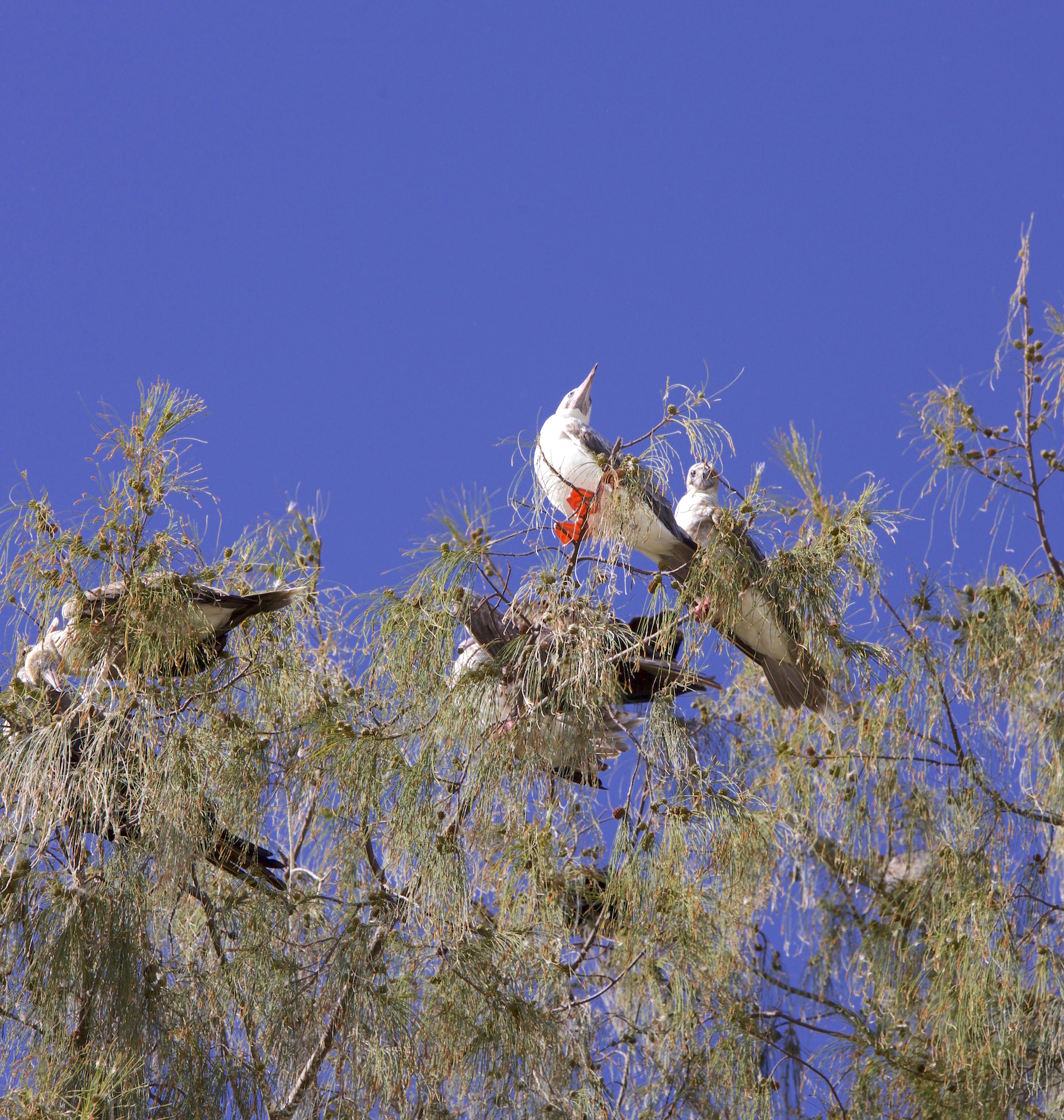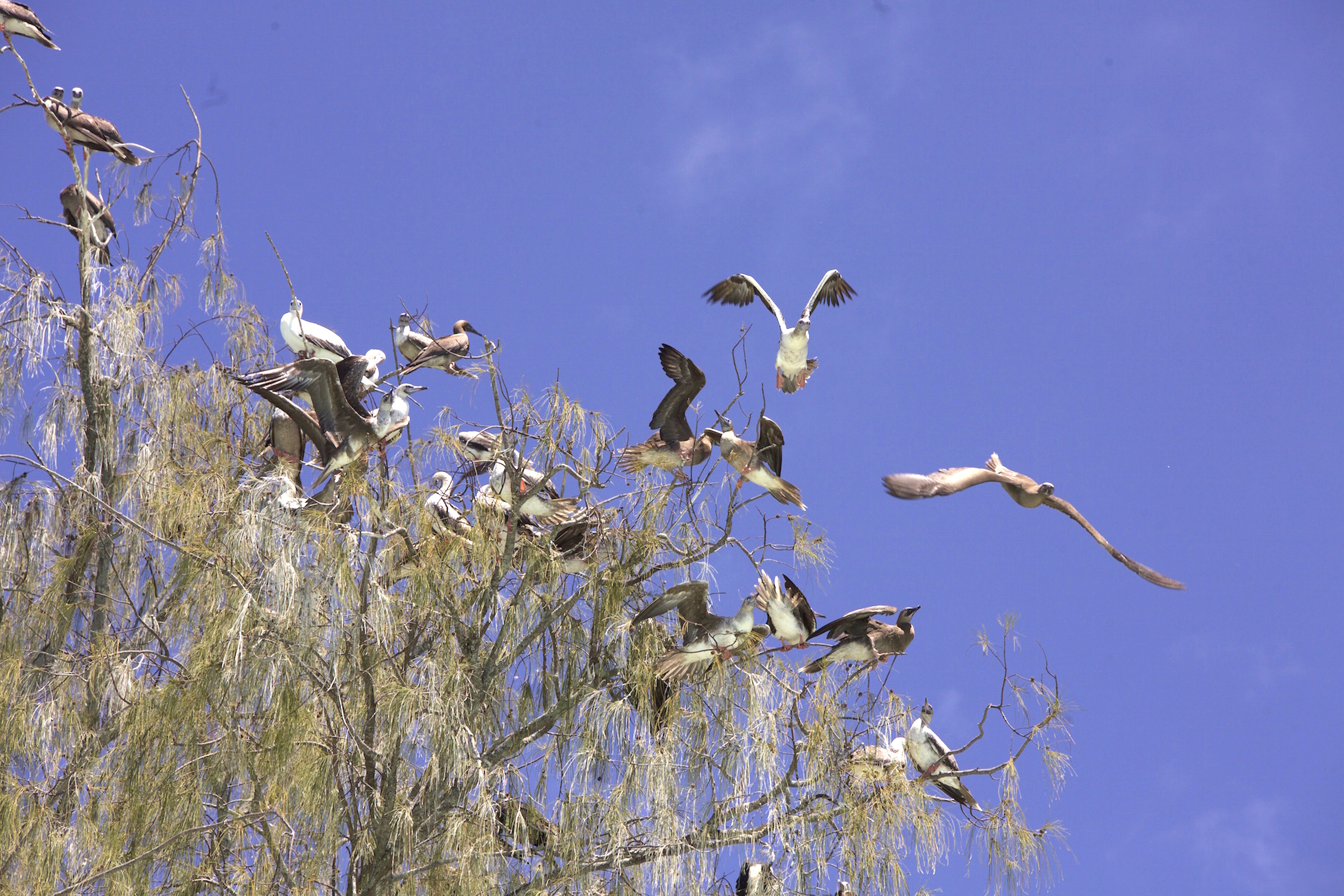Boobies: Gateway Birds
Although relatively infrequent visitors to D’Arros Island, we currently have an influx of boobies around our field camp in St Joseph Atoll. Tall casuarina trees are, for the past few months, the favoured roosting grounds of roughly 3,000 red-footed boobies (Sula sula). Although an avid birder myself even before my first booby sighting, it is my belief that boobies are a gateway bird to the world of bird watching, the best bird to spark an interest and get people talking about birds.

A Red-Footed Booby shows off its namesake in the trees above our St Joseph camp. Photo by Clare Daly | © Save Our Seas Foundation
I learned this bit about gateway birds the first time I saw a pair of brown boobies (Sula leucogaster) from the window of where I work. Apparently, these birds once nested on St Joseph but are now rarely seen in our island group and only nest in small numbers far away in other island groups in the Seychelles. So naturally, I was excited to see them. I went to the lab next door and announced my sighting, a pair of beautiful brown boobies right on the beach, and without hesitation the lab cleared out as everyone rushed to the beach with what I took for ornithological interest.
Usually, my reports of seeing migratory bar-tailed Godwits (Limosa lapponica) or a rare golden-morph tropicbird (Phaethon lepturus) are all but ignored over lunchtime conversation. But now a hush falls over the table when I mention how the boobies of St Joseph bustle to the trees over camp as the sun is going down. These boisterous boobies create such a commotion, bouncing on branches as they come in to land and keeping us up at night as they settle in, objecting noisily as more and more boobies crowd in above camp. There’s been a noted increase in requests to join us in the field, particularly for bird watching. I’m just glad to do my part to introduce people to the wonderful world of birds through the joy of boobies.

Boobies Everywhere! A variety of plumages, from juvenile to white-morph adults are present on St Joseph. Photo by Clare Daly | © Save Our Seas Foundation
